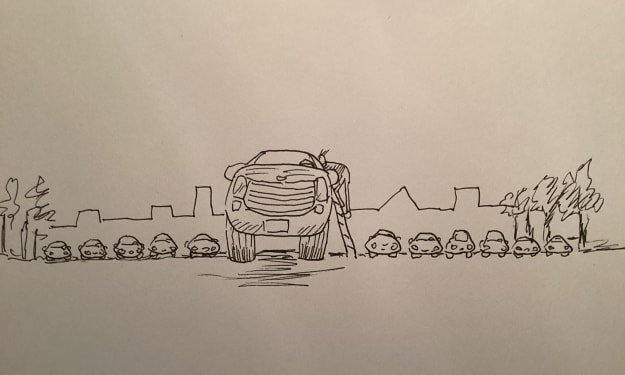Beyond the Surface: Understanding Concealed Depression
Seeing the Unseen: Insights into Concealed Depression
Let me introduce you to Natalie. When Natalie first came to see me in therapy, she seemed almost apologetic. She giggled nervously while describing what sounded like symptoms of panic disorder—her heart racing, difficulty breathing. Despite her outward success—plenty of friends, a solid marriage, and a deep love for her kids—she felt that something was missing. "My life's almost perfect," she admitted, "I just need to calm down."
With eight years of therapy experience under my belt, I initially thought Natalie's case was a typical one of anxiety disorder. My goal was clear: help her identify what triggered her anxiety and find ways to manage it. However, one day, Natalie's husband Jeff called me in a panic. He had received a troubling message from Natalie asking him to take their kids to her mother's house when he returned. Nothing had seemed amiss during our last session; in fact, Natalie had even mentioned that therapy was helping.
Jeff's urgent tone made me pause. Trusting my instincts, I rushed to their home, using the garage code Jeff had given me. As I entered their kitchen, I noticed freshly washed dishes and neatly folded towels—everything was eerily silent. Calling out Natalie's name, I half-expected her to appear, embarrassed after another panic attack. Instead, I found her in bed, alongside an empty vodka bottle and scattered pills on the table.
It was a moment of shock. Natalie insisted she was fine, urging me not to call 911, but I knew better. I dialed emergency services, feeling a mix of disbelief and guilt. How could I have missed the signs? What if I hadn't followed Jeff's call? Yet, Natalie had only revealed so much about her struggles—panic disorder and mild depression were the diagnoses I had based on her disclosures.
This experience with Natalie led me to a profound realization: many of us harbor secrets, not necessarily the secrets themselves, but the emotions tied to them. Shame, fear, self-loathing—these feelings often remain hidden, masked by outward appearances of normalcy. Natalie's near-tragic outcome underscored the danger of suppressing such emotions.
Years later, reflecting on cases like Natalie's, I wrote a blog post that unexpectedly went viral. I described how seemingly successful people could be silently battling depression. The response was overwhelming; my inbox filled with messages from individuals who saw themselves in my words, sharing their own hidden struggles.
This journey prompted me to question our current approach to mental health. Our reliance on diagnostic manuals like the DSM, while valuable, may overlook those who don't neatly fit into diagnostic categories. Moreover, the stigma surrounding mental health issues can deter individuals from seeking help until it's almost too late.
Experts like Edwin Schneiderman and Sidney Blatt have challenged conventional views on depression and suicide, emphasizing the importance of acknowledging emotional pain and perfectionism's role in exacerbating it. Their insights highlight the limitations of diagnostic frameworks in capturing the full spectrum of human suffering.
Ultimately, my goal shifted towards a strength-based approach, focusing on understanding and validating each individual's unique emotional experience. I realized that normalizing conversations about suicidal thoughts and feelings could encourage transparency and, importantly, save lives.
Take Michael, for example. An accomplished figure who outwardly exuded success, Michael's upbringing taught him to bury his feelings deep. It wasn't until a personal tragedy that he began to confront his suppressed emotions, including thoughts of suicide. Through our sessions, he learned to forgive himself and embrace his vulnerability—a journey that led him to rediscover compassion and, ultimately, choose life.
These stories—Natalie's and Michael's—are reminders that behind the facade of success, many individuals grapple silently with pain. By fostering a culture where openness is seen as a strength rather than a weakness, we can create spaces where people feel safe to share their struggles without fear of judgment or shame. Each of us has the power to make a difference by simply listening, offering support, and embracing the complexity of human emotions.
About the Creator
Joseph Villarito Canete
I am the architect of my imagination, constructing worlds with mere words and sculpting the human experience through the artful manipulation of language.
Enjoyed the story? Support the Creator.
Subscribe for free to receive all their stories in your feed. You could also pledge your support or give them a one-off tip, letting them know you appreciate their work.







Comments
There are no comments for this story
Be the first to respond and start the conversation.